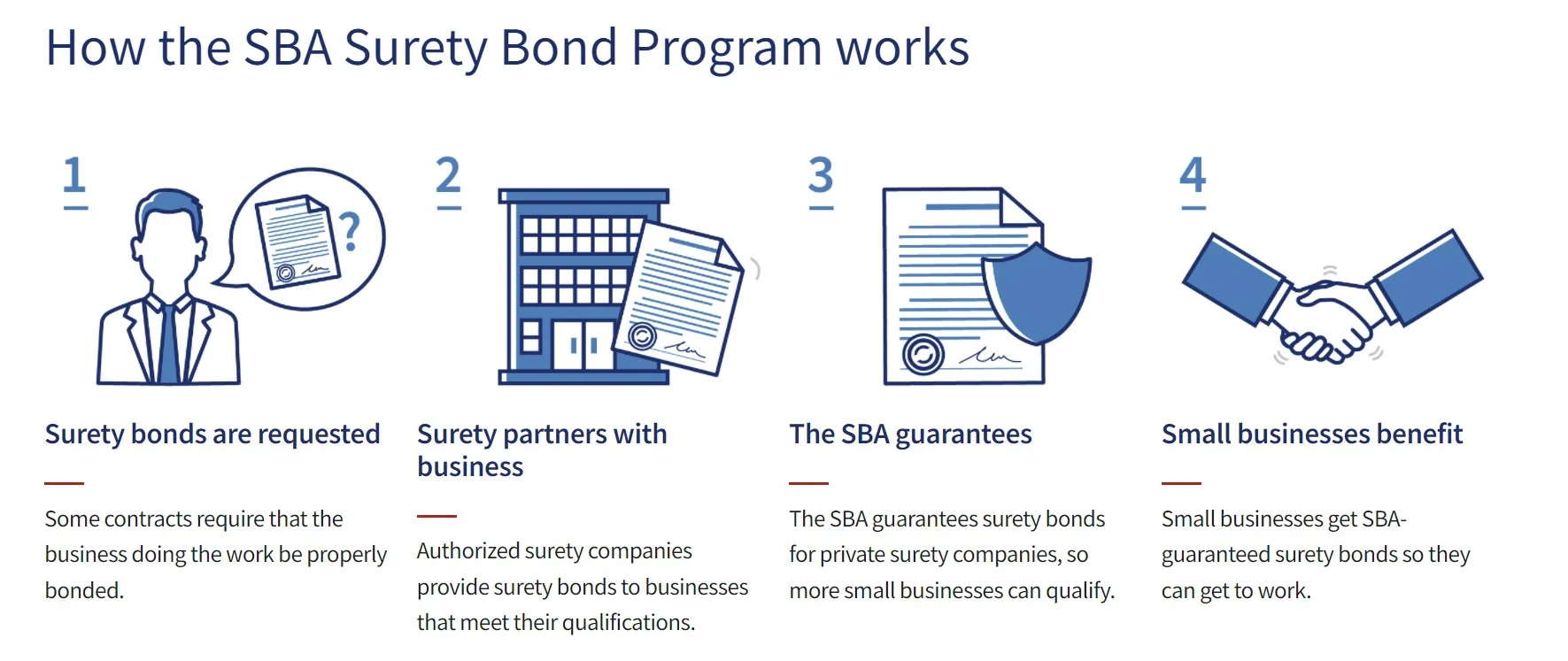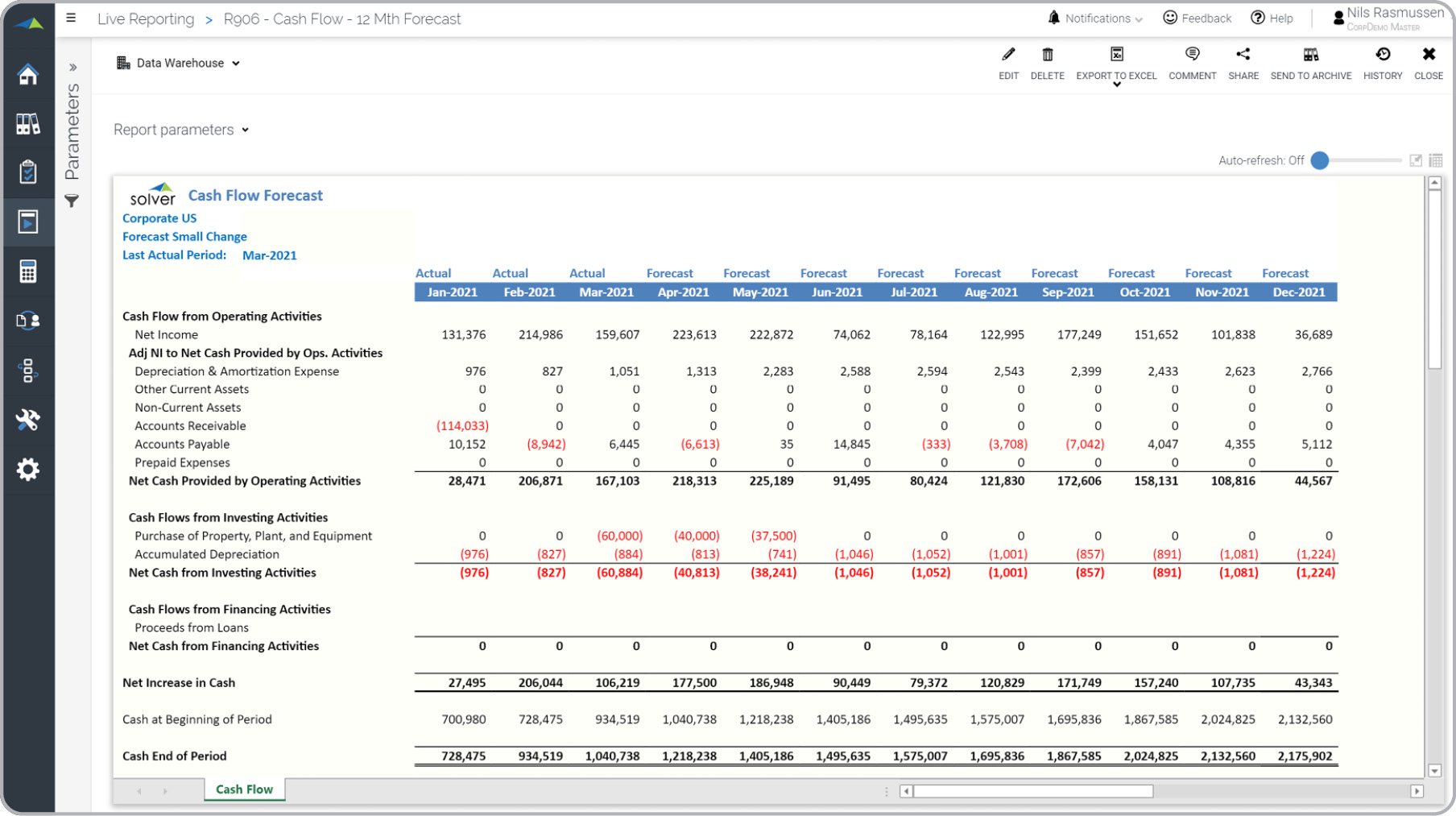

Finance
How Long Do Savings Bonds Mature
Published: January 16, 2024
Learn about the maturity period of savings bonds and how long it takes for them to reach their full value. Discover the finance behind saving with bonds.
(Many of the links in this article redirect to a specific reviewed product. Your purchase of these products through affiliate links helps to generate commission for LiveWell, at no extra cost. Learn more)
Table of Contents
- Introduction
- Definition of Savings Bonds
- Types of Savings Bonds
- How Savings Bonds Mature
- Factors Affecting the Maturity Period
- Average Maturity Period of Savings Bonds
- Benefits of Allowing Savings Bonds to Mature
- Risks of Cashing in Savings Bonds Before Maturity
- Tips for Maximizing Savings Bond Maturity
- Conclusion
Introduction
Welcome to our comprehensive guide on savings bonds and their maturity periods. Whether you’re a seasoned investor or just starting to explore different savings options, understanding the maturity of savings bonds is essential for making informed financial decisions. Savings bonds have long been a popular investment option due to their low-risk nature and guaranteed returns. In this article, we will delve into the concept of savings bond maturity and explore how it impacts your investment strategy.
Savings bonds are government-issued debt securities that offer individuals a secure way to save money while earning interest. They are typically backed by the government and considered to be one of the safest investment options available. One of the key factors that determines the value of savings bonds is their maturity period, which refers to the time it takes for the bond to reach its full face value.
Understanding how savings bonds mature is crucial for investors who want to maximize their returns or plan their finances accordingly. The maturity period of a savings bond can vary depending on various factors, including the type of bond and the terms set by the government. By gaining insight into these factors, you can make more informed decisions about when to buy and sell your savings bonds.
In the sections that follow, we will examine the various types of savings bonds, the factors that influence their maturity periods, and the benefits and risks associated with allowing savings bonds to mature. We will also provide some tips for maximizing the maturity of your savings bonds to make the most of your investment.
Before we dive into the details, it is important to understand that the information provided in this article is intended for educational purposes only and should not be construed as financial advice. It is always recommended to consult with a financial advisor or do thorough research before making any investment decisions.
Definition of Savings Bonds
Savings bonds are government-issued debt securities that individuals can purchase as a means of investing and saving money. They are considered one of the safest investment options available, as they are backed by the government itself. When you purchase a savings bond, you are essentially lending money to the government, who then promises to repay the principal amount along with interest over a specific period of time.
Savings bonds are typically available in fixed denominations, ranging from as low as $25 to as high as $10,000. They can be purchased directly from the government or through financial institutions such as banks or credit unions. The interest rates on savings bonds are set by the government and can vary depending on the type of bond and prevailing market conditions.
One of the key features of savings bonds is that they have a predetermined maturity period, which is the length of time it takes for the bond to reach its full face value. This maturity period can range from a few months to several years, depending on the type of savings bond. At the end of the maturity period, the bondholder receives the full face value of the bond, along with any earned interest.
It is important to note that savings bonds are different from other types of bonds, such as corporate bonds or municipal bonds. While those bonds are issued by companies or local governments to raise capital, savings bonds are specifically issued by the government to provide individuals with a safe and accessible investment option.
Furthermore, savings bonds are considered non-tradable securities, which means that they cannot be bought or sold on secondary markets like stocks or corporate bonds. Instead, they are meant to be held until maturity, at which point bondholders can cash them in and receive the full value of the bond.
Overall, savings bonds offer a low-risk investment option for individuals looking to save money and earn interest. They provide a secure way to invest in the government, with the added benefit of guaranteed returns over a fixed period of time. Understanding the basics of savings bonds is crucial for making informed investment decisions and maximizing your savings.
Types of Savings Bonds
There are several types of savings bonds available for investors to choose from, each with its own unique features and benefits. Here are the most common types of savings bonds:
- Series EE Bonds: Series EE bonds are a type of savings bond that accrues interest over a fixed period of time. These bonds are sold at face value, meaning you pay half of the face value when you purchase the bond, and it matures to its full face value over a period of 20 years. Series EE bonds are known for their long-term savings potential and can continue to earn interest for up to 30 years.
- Series I Bonds: Series I bonds are another type of savings bond that offer a combination of a fixed interest rate and an inflation-adjusted rate. The fixed rate remains the same for the entire term of the bond, while the inflation-adjusted rate is updated every six months to keep up with changes in the Consumer Price Index. Series I bonds have a maturity period of 30 years, but you have the option to redeem them after 12 months.
- Series HH Bonds: Series HH bonds were discontinued in 2004 but are still held by some investors. These bonds were issued in exchange for Series EE bonds or Series E bonds and paid interest in the form of semi-annual checks. Series HH bonds had a maturity period of 20 years and the interest earned was subject to federal income tax.
- Treasury Inflation-Protected Securities (TIPS): Although not technically savings bonds, TIPS are another government-issued investment option that provides protection against inflation. TIPS are similar to Series I bonds in that they have a fixed interest rate and an additional rate that adjusts with inflation. They have a maturity period of 5, 10, or 30 years, and the principal amount is adjusted based on changes in the Consumer Price Index.
- Savings Bonds for Education: The U.S. Department of the Treasury offers savings bonds specifically designed to help finance education expenses. The two main types are the Series EE and Series I savings bonds. These education savings bonds have the same features and maturity periods as their regular counterparts but provide certain tax advantages when used for qualified education expenses.
Each type of savings bond has its own unique characteristics and benefits. As an investor, it’s important to consider your financial goals and time horizon when choosing which type of savings bond is right for you. Whether you’re looking for a long-term savings option, protection against inflation, or tax advantages for educational expenses, there is a savings bond available to suit your needs.
How Savings Bonds Mature
The process of how savings bonds mature is a crucial aspect of understanding their investment value. When you purchase a savings bond, it has a specific term or maturity period, which is the length of time it takes for the bond to reach its full face value. Here’s a breakdown of how savings bonds mature:
1. Accrual of Interest: From the moment you purchase a savings bond, it begins accruing interest. The interest on most savings bonds is compounded semi-annually, meaning it is calculated twice a year. The specific interest rate for each type of savings bond is determined either at the time of purchase or by adjusting for inflation (in the case of Series I bonds or TIPS).
2. Face Value: The face value of a savings bond is the principal amount that the bondholder will receive at maturity. Some savings bonds are sold at face value, while others are sold at a discounted price. For example, Series EE bonds are sold at half the face value and gradually increase in value over the term of the bond until they reach their full face value.
3. Maturity Period: The maturity period is the length of time it takes for a savings bond to reach its full face value. This period varies depending on the type of bond. For instance, Series EE bonds have a maturity period of 20 years, while Series I bonds have a maturity period of 30 years. At the end of this period, the bondholder is entitled to redeem the bond for its full face value.
4. Cashing in the Bond: Once a savings bond reaches maturity, the bondholder has the option to cash it in or continue holding it. When cashing in a savings bond, the bondholder receives the full face value of the bond, along with any accrued interest up until that point. It’s important to note that there may be penalties for redeeming a bond before it reaches maturity, depending on the type of bond and how long it has been held.
5. Continued Interest: Some savings bonds, such as Series EE bonds and TIPS, continue to earn interest after reaching their maturity period. This additional interest can be accumulated for up to 30 years, allowing the bondholder to benefit from potential growth even after the bond has matured.
Understanding the process of how savings bonds mature is essential for planning your investment strategy and maximizing the returns on your bond holdings. The specific details of each type of savings bond, including their maturity period and interest accrual, should be carefully considered to align with your financial goals and timeline.
Factors Affecting the Maturity Period
The maturity period of a savings bond can vary depending on several factors. Understanding these factors will help you determine the length of time your savings bond needs to reach its full face value. Here are the key factors that can influence the maturity period of a savings bond:
1. Bond Type: Each type of savings bond has its own predetermined maturity period. For example, Series EE bonds have a maturity period of 20 years, while Series I bonds have a maturity period of 30 years. Treasury Inflation-Protected Securities (TIPS) have maturity options of 5, 10, or 30 years. It is important to check the maturity period before investing in a savings bond to ensure it aligns with your financial goals.
2. Interest Rates: The interest rate on a savings bond can also affect its maturity period. Higher interest rates can potentially allow a bond to reach its face value faster, while lower interest rates may extend the maturity period. For example, Series I bonds have a fixed interest rate component that remains the same throughout the term of the bond, which can impact how quickly the bond matures.
3. Inflation Rate: For certain types of savings bonds, such as Series I bonds and TIPS, the inflation rate can influence the maturity period. The interest rate on these bonds is adjusted periodically based on inflation, which means that higher inflation rates can accelerate the maturity process. If the inflation rate is low, it may take longer for the bond to reach its full face value.
4. Early Redemption: If you choose to redeem a savings bond before it reaches its maturity period, you may receive a lesser amount of the full face value. This is especially true for bonds that have not yet matured for at least five years. It’s important to carefully consider this factor and the potential impact on your investment returns before cashing in a savings bond prematurely.
5. Market Conditions: External market conditions, such as changes in interest rates, inflation, and general economic conditions, can also affect the maturity period of savings bonds. In times of economic uncertainty or fluctuating interest rates, the maturity period may be subject to adjustments or changes.
It’s important to keep in mind that the specific terms and conditions of each savings bond will outline the maturity period and any additional factors that may influence it. Before investing in a savings bond, it is advisable to carefully review the bond’s features and consult with a financial advisor to ensure it aligns with your investment goals and time horizon.
Average Maturity Period of Savings Bonds
The average maturity period of savings bonds can vary depending on the type of bond and the terms set by the government. Different savings bonds have different maturity periods, ranging from as short as a few months to as long as several decades. Understanding the average maturity period of savings bonds can help you plan your investment strategy and align it with your financial goals. Here are some examples of the average maturity periods for common types of savings bonds:
1. Series EE Bonds: Series EE bonds have a maturity period of 20 years. However, they continue to earn interest for an additional 10 years, resulting in a total maximum maturity period of 30 years. This extended period allows bondholders to benefit from potential growth even after the bond reaches its face value.
2. Series I Bonds: Series I bonds have a longer average maturity period of 30 years. Like Series EE bonds, they also continue to earn interest for an additional 10 years beyond their maturity period. This extended period provides an opportunity for bondholders to maximize their returns over an extended period of time.
3. Treasury Inflation-Protected Securities (TIPS): TIPS have different maturity options of 5, 10, and 30 years. This range allows investors to choose the maturity period that best aligns with their investment goals. The interest on TIPS adjusts with inflation, providing protection against rising prices and potential growth over time.
It’s important to note that these average maturity periods are specific to the mentioned types of savings bonds and may vary for other types of bonds. Additionally, it’s crucial to review the terms and conditions of each bond to understand its specific maturity period.
Timing your investment and considering the maturity period of savings bonds is crucial, especially if you have specific financial goals or plans in mind. If you’re saving for a short-term expense, such as a down payment on a house or a vacation, a bond with a shorter maturity period might be more suitable. On the other hand, if you’re planning for long-term goals, such as retirement or education expenses, bonds with longer maturity periods may provide greater potential for growth.
It’s important to do your research and consult with a financial advisor before investing in savings bonds. By understanding the average maturity periods and considering your financial goals, you can make informed decisions to help you effectively and strategically manage your investment portfolio.
Benefits of Allowing Savings Bonds to Mature
Allowing savings bonds to reach their full maturity can offer several benefits for investors. While it may be tempting to cash in a savings bond before it matures, there are advantages to holding onto them until the end of their term. Here are some key benefits of allowing savings bonds to mature:
1. Guaranteed Returns: One of the primary advantages of savings bonds is that they provide a guaranteed return on investment. By allowing the bond to mature, investors can be assured of receiving the full face value of the bond, along with any accrued interest. This guarantee makes savings bonds a low-risk investment option.
2. Accrued Interest: Allowing savings bonds to reach maturity means you can benefit from compounded interest over the bond’s term. The longer the bond is held, the more interest accrues, potentially increasing the overall return on investment. This accumulated interest can be significant, especially for bonds with longer maturity periods.
3. Tax Advantages: Interest earned on savings bonds is generally subject to federal income tax but exempt from state and local taxes. However, if the savings bond is used to finance qualified educational expenses, the interest earned may be tax-free at the federal level as well. By holding the bond until maturity, investors can take advantage of any potential tax benefits associated with their savings bonds.
4. Flexible Redemption Options: Savings bonds provide flexibility when it comes to redeeming them. Investors are not required to cash them in at maturity and can choose to continue holding them. This flexibility gives investors the freedom to determine when the bond is most advantageous to redeem, enabling them to align it with their unique financial circumstances and goals.
5. Protection Against Inflation: Some types of savings bonds, such as Series I bonds and TIPS, offer protection against inflation. These bonds have interest rates that adjust with changes in the Consumer Price Index, allowing investors to potentially keep up with rising prices. By allowing these bonds to reach maturity, investors can benefit from this inflation protection over the long term.
By allowing savings bonds to mature, investors not only have the opportunity to maximize their returns but also mitigate the risks of early redemptions. Cashing in a savings bond before maturity could lead to missed interest earnings and potential penalties. Therefore, it is generally advisable to hold onto savings bonds until they reach their full maturity to fully reap the benefits they offer.
Risks of Cashing in Savings Bonds Before Maturity
While it may be tempting to cash in savings bonds before their maturity period, doing so can come with certain risks. It’s important to carefully consider these risks before making a decision to redeem your savings bonds early. Here are some key risks of cashing in savings bonds before their maturity:
1. Loss of Potential Earnings: Cashing in a savings bond before it reaches maturity means missing out on potential interest earnings. Savings bonds accrue interest over time, and the longer you hold them, the more interest you can earn. By cashing them in early, you may be forfeiting additional interest that would have accumulated had you kept the bond until maturity.
2. Penalties: Some savings bonds have specific rules and penalties for early redemptions. For example, cashing in a Series EE bond within the first five years will result in the loss of the last three months’ worth of interest. Withdrawing funds from a savings bond before it has matured for at least one year can also result in the loss of the last three months’ interest for Series I bonds. It’s essential to be aware of these penalties and factor them into your decision-making process.
3. Tax Implications: Redeeming savings bonds early can have tax implications. The interest earned on savings bonds is subject to federal income tax. If you cash in a savings bond before holding it for at least five years, you may have to pay federal income tax on the earned interest in the year of redemption. However, if the bond is used for qualified educational expenses, you may be eligible for tax exemptions. It’s crucial to consult with a tax professional to understand the tax implications of redeeming savings bonds before maturity.
4. Missed Opportunities: Cashing in savings bonds early means missing out on potential future opportunities. By holding onto the bonds until maturity, you may have the chance to take advantage of higher interest rates or inflation-adjustments. Additionally, life circumstances or unexpected expenses may arise in the future where having the savings bond as a financial resource could prove beneficial.
5. Loss of Safety Net: Savings bonds are considered a safe and low-risk investment option. By redeeming them before maturity, you lose the safety net they provide. Having savings bonds can provide stability and serve as a backup in case of emergencies or unexpected financial needs. Cashing them in early removes this safety net and leaves you with fewer options for secure savings.
Before cashing in savings bonds before maturity, carefully weigh the risks involved and consider the potential benefits of holding onto them until they reach their full term. It’s essential to assess your financial situation, goals, and any applicable penalties or taxes before making a decision. Consulting with a financial advisor or tax professional can provide you with valuable insights to make the most informed choice.
Tips for Maximizing Savings Bond Maturity
Maximizing the maturity of your savings bonds can help you make the most of your investment and potentially increase your returns. Here are some tips to consider for maximizing savings bond maturity:
1. Hold the Bond Until Maturity: One of the simplest and most effective ways to maximize savings bond maturity is to hold onto them until they reach their full term. By resisting the urge to cash in early, you can benefit from the full face value of the bond and any accrued interest.
2. Take Advantage of Extended Maturity: Some savings bonds, like Series EE bonds and TIPS, continue to earn interest even after they reach their maturity period. Consider keeping these bonds for the extended period to maximize the potential growth and returns on your investment.
3. Plan Your Redemptions: Once you decide to cash in your savings bonds, it’s important to strategically plan your redemptions. Consider factors such as your financial goals, tax implications, and future financial needs. Depending on your circumstances, redeeming bonds in a particular order or at specific times can help optimize your savings.
4. Stay Informed about Interest Rates: Keep an eye on prevailing interest rates. If interest rates are expected to rise, it may be worth holding onto your savings bonds for longer to take advantage of higher returns. Conversely, if rates are decreasing, it may be beneficial to redeem bonds earlier to avoid missing out on potential interest rate drops.
5. Understand Tax Benefits: Educate yourself about any applicable tax benefits associated with your savings bonds. For example, if you’re using the bonds for qualified educational expenses, you may be eligible for tax exemptions on the earned interest. Make sure to follow the necessary guidelines to maximize any potential tax advantages.
6. Regularly Review and Evaluate: Periodically review your savings bond portfolio to ensure it aligns with your financial goals. Assess whether it makes sense to continue holding certain bonds or if redeeming them early would be more beneficial. Regular evaluation allows you to make informed decisions and adapt your strategy accordingly.
7. Consider Reinvesting: If you have savings bonds reaching maturity, consider reinvesting the funds into new bonds. By doing so, you can continue to benefit from the stability and potential earnings of savings bonds while maintaining a diversified investment portfolio.
Remember, it’s important to consult with a financial advisor or tax professional for personalized advice based on your unique financial situation. They can provide guidance tailored to your needs and help you maximize the maturity of your savings bonds.
Conclusion
Savings bonds offer a secure and dependable investment option for individuals looking to grow their savings. Understanding the maturity of savings bonds is crucial for optimizing your investment strategy, maximizing returns, and achieving your financial goals.
In this comprehensive guide, we explored the definition of savings bonds and the different types available, such as Series EE, Series I, and TIPS. We learned about the factors that can influence the maturity period of savings bonds, including interest rates, inflation rates, and early redemption penalties.
Allowing savings bonds to reach their full maturity offers several benefits. It ensures guaranteed returns, allows for accrued interest over time, potentially provides tax advantages, offers flexibility in redemption, and protects against inflation. However, it’s important to be aware of the risks associated with cashing in savings bonds prematurely, such as missed potential earnings and penalties.
To maximize the maturity of your savings bonds, it’s advisable to hold onto them until their full term, take advantage of extended maturity options, plan redemptions strategically, stay informed about interest rates, understand tax benefits, regularly review and evaluate your portfolio, and consider reinvesting the funds into new bonds.
Remember, this guide serves as an educational resource, and it’s essential to seek personalized advice from a financial advisor or tax professional. They can provide guidance based on your specific circumstances and help you make informed decisions to optimize the maturity of your savings bonds.
By staying informed, being proactive, and making thoughtful decisions, you can make the most of your savings bonds and take advantage of their long-term growth potential. Whether you’re saving for a specific financial goal or building a secure investment portfolio, savings bonds can be a valuable addition to your overall financial strategy.














